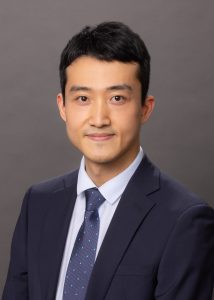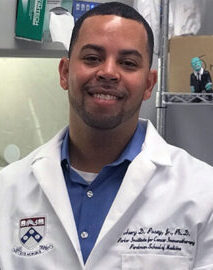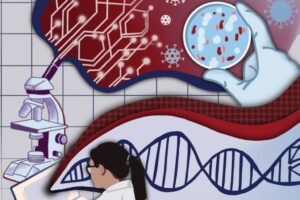Members of the inaugural cohort of fellows in the Center for Innovation and Precision Dentistry (CiPD)’s NIDCR T90/R90 Postdoctoral Training Program have been recognized for their research activities with fellows receiving awards from the American Association for Dental, Oral, and Craniofacial Research (AADOCR), the Society for Biomaterials, and the Osteology Foundation. All four of the honored postdocs are affiliated with Penn Bioengineering.

Zhi Ren won first place in the Fives-Taylor Award at the AADOCR Mini Symposium for Young Investigators. A postdoctoral fellow in the labs of Dr. Hyun (Michel) Koo at Penn Dental Medicine (and member of the Penn Bioengineering Graduate Group) and Dr. Kathleen Stebe of Penn Engineering, Dr. Ren’s research focuses on understanding how bacterial and fungal pathogens interact in the oral cavity to form a sticky plaque biofilm on teeth, which gives rise to severe childhood tooth decay that affects millions of children worldwide. In his award-winning study, titled “Interkingdom Assemblages in Saliva Display Group-Level Migratory Surface Mobility”, Dr. Ren discovered that bacteria and fungi naturally present in the saliva of toddlers with severe decay can form superorganisms able to move and rapidly spread on tooth surfaces.

Justin Burrell won second place in the AADOCR Hatton Competition postdoctoral category for his research. Dr. Burrell has been working with Dr. Anh Le in Penn Dental Medicine’s Department of Oral Surgery/Pharmacology and Dr. D. Kacy Cullen of Penn Medicine and Penn Bioengineering. Together, their interdisciplinary team of clinician-scientists, biologists, and neuroengineers have been developing novel therapies to expedite facial nerve regeneration and increase meaningful functional recovery.

Marshall Padilla earned third place at the Society for Biomaterials Postdoctoral Recognition Award Competition for a project titled, “Branched lipid architecture improves lipid-nanoparticle-based mRNA delivery to the liver via enhanced endosomal escape”. Padilla was also a finalist in the AADOCR Hatton Award Competition, presenting on a separate project titled, “Lipid Nanoparticle Optimization for mRNA-based Oral Cancer Therapy”. Both projects employ lipid nanoparticles, the same delivery vehicles used in the mRNA COVID-19 vaccine technology. A postdoctoral fellow in the lab of Dr. Michael J. Mitchell of Penn’s Department of Bioengineering, Dr. Padilla’s research focuses on developing new ways to enhance the efficacy and safety of lipid nanoparticle technology and its applications in dentistry and biomedicine. He has been working in collaboration with Dr. Shuying (Sheri) Yang and Dr. Anh Le in Penn Dental Medicine.

Dennis Sourvanos (GD’23, DScD’23) was the recipient of the Trainee Travel Grant award through the Osteology Foundation (Lucerne Switzerland). Dr. Sourvanos will be presenting his research related to medical dosimetry and tissue regeneration at the International Osteology Symposium in Barcelona, Spain (April 27th – 29th 2023). He also presented at the 2023 AADOCR/CADR Annual Meeting for his project titled, “Validating Head-and-Neck Human-Tissue Optical Properties for Photobiomodulation and Photodynamic Therapies.” Dr. Sourvanos has been working with Dr. Joseph Fiorellini in Penn Dental Medicine’s Department of Periodontics and Dr. Timothy Zhu in the Hospital of the University of Pennsylvania’s Department of Radiation Oncology and the Smilow Center for Translational Research (and member of the Penn Bioengineering Graduate Group).
Read the full announcement in Penn Dental Medicine News.











